Idea by
Eleonora Alviti and Pietro Romitelli
Call for ideas 2020
Hermit Crab Module
Hermit Crab Module
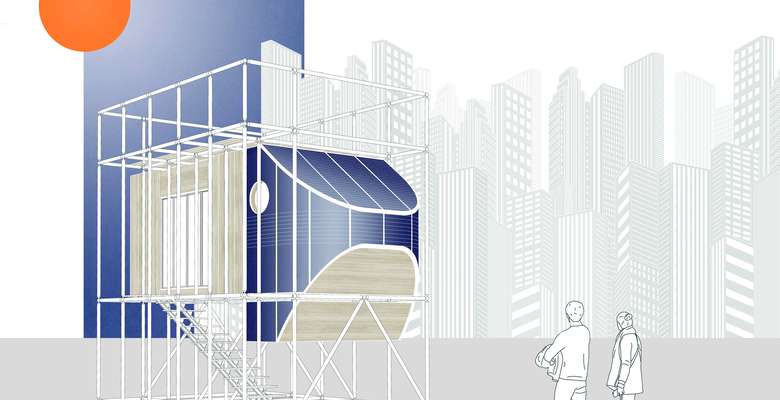
- Systemic changes
Throughout history, the concept of Home has changed following the evolution of man and society. Since the Industrial Revolution, mass production and the advent of consumerism, have led to the birth of what Zygmunt Bauman defines as "Homo Consumen". The home has become a place for the satisfaction of personal necessities, leaving more and more aside the needs of the community. The Hermit Crab Module concept combines the environmental duties of the global community with the individual's personal needs. The image of the hermit crab, in constant pursuit of the right living dimension, inspired us to design this module and to rethink the essential aspects of contemporary living. The ever-expanding city is the background that we have imagined for this project, which is a possible first living solution for the ever-increasing number of people moving towards large metropolises.
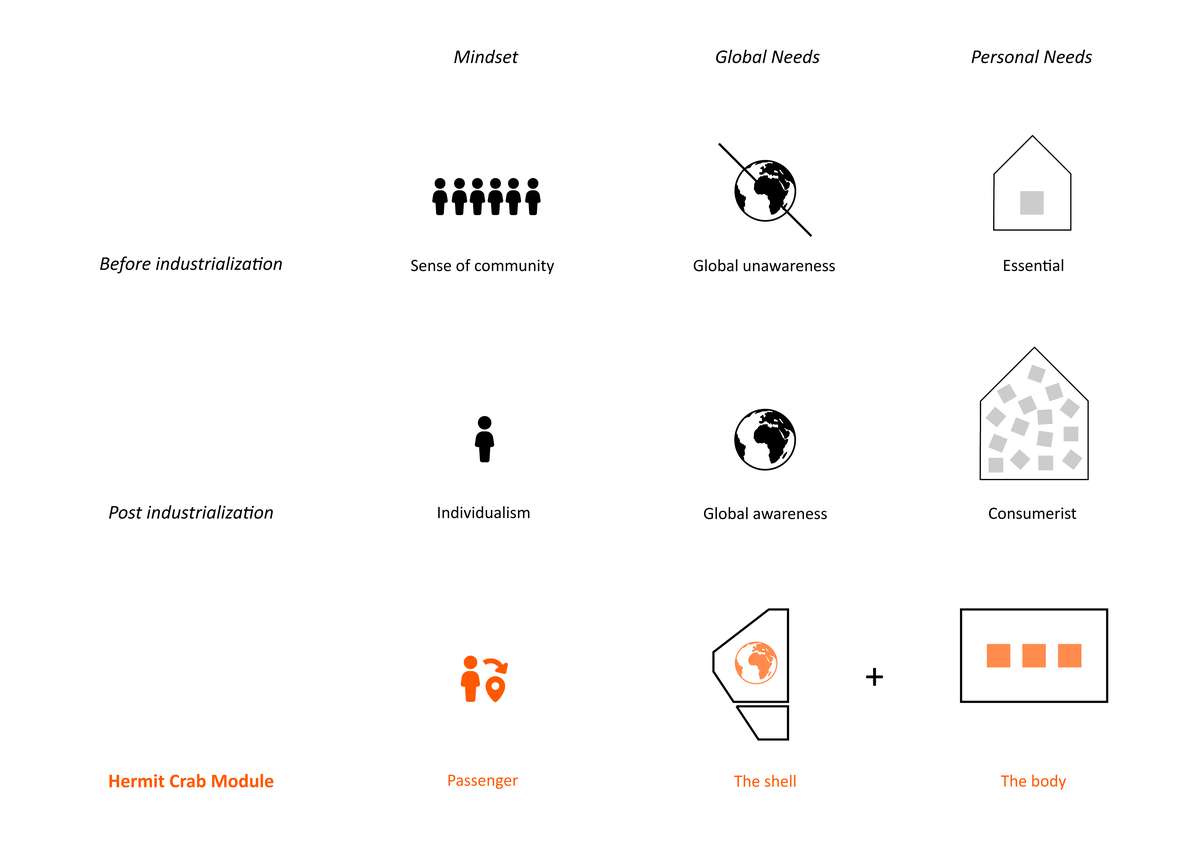
The conceptual result of our reflection, are the two fundamental elements of the project. The shell is a constant element for each Hermit Crab Module. It represents the portion of individual commitment that each of us is called to cede to the society, to lead a sustainable life. The Body can be modified according to personal needs and culture and represents the intimate home as we know it, composed of daily needs.

The Hermit Crab Module is designed to accommodate two people in 25 sqm. The living module is inserted in a tubular structure that raises it from the ground. The shell contains the services (bathroom-kitchen) and the technological equipment. The body consists of a versatile space, which allows it to be modified, becoming both a living and sleeping area, thanks to the presence of a rototranslating furniture, which can be modified according to the individual needs.

The module is made from reused and reusable materials. The main structure is composed of tubular steel elements. The walls and floors are "sandwich" elements, composed of a wooden frame, obtained by recovering scaffolding planks. Inside the module there is the RT Cabinet that can be moved and rotated. In this furniture there are both a folding table and a sofa bed, so that it is possible to configure the space freely.
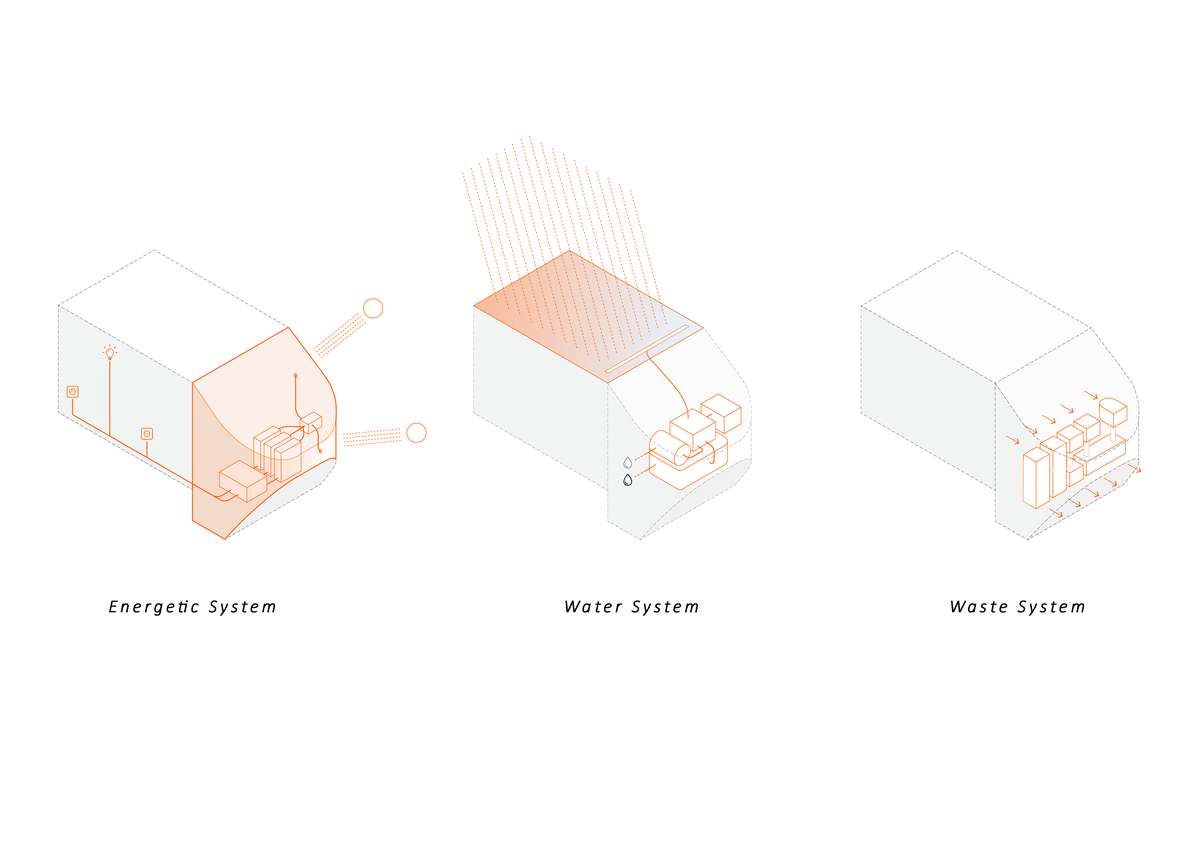
The Hermit Crab Module is designed to have the lowest possible impact on the environment. Rainwater is collected in the roof, which is filtered and stored in the tank. The south-facing shell is covered with organic solar panels, which recharge the module's batteries. The waste produced, organic and inorganic, is sorted, shredded and stored or composted in the containers in the lower part of the shell, so that it can be easily collected from the outside.

The Hermit Crab module is designed both to be inserted punctually in the various areas of the city, as well as to form a system of modules, in order to obtain communities marked by a new way of living, essential and sustainable. The module is a lightweight element that can be easily and quickly assembled or disassembled. It is itself a recyclable system, and not only the materials of which it is composed, so that it can be reused over time.
Hermit Crab Module
Hermit Crab Module

- Systemic changes
Throughout history, the concept of Home has changed following the evolution of man and society. Since the Industrial Revolution, mass production and the advent of consumerism, have led to the birth of what Zygmunt Bauman defines as "Homo Consumen". The home has become a place for the satisfaction of personal necessities, leaving more and more aside the needs of the community. The Hermit Crab Module concept combines the environmental duties of the global community with the individual's personal needs. The image of the hermit crab, in constant pursuit of the right living dimension, inspired us to design this module and to rethink the essential aspects of contemporary living. The ever-expanding city is the background that we have imagined for this project, which is a possible first living solution for the ever-increasing number of people moving towards large metropolises.
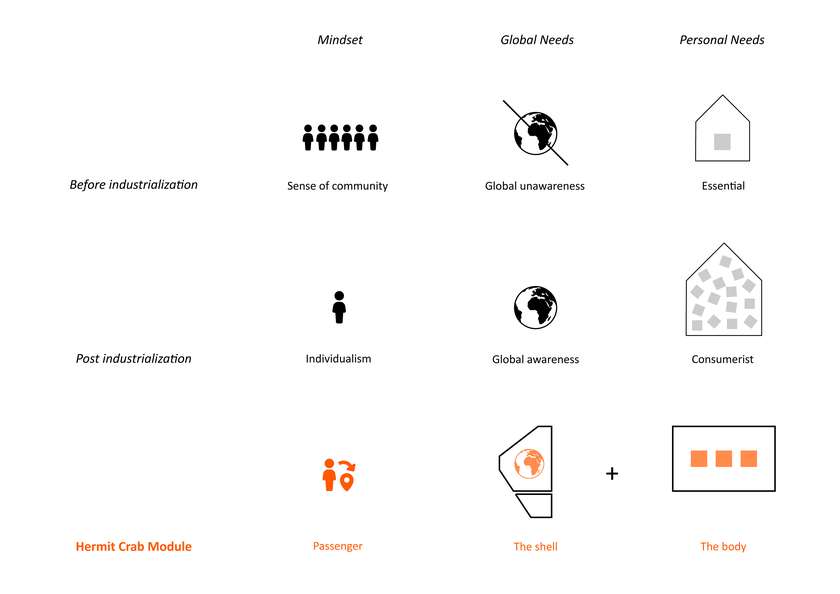
The conceptual result of our reflection, are the two fundamental elements of the project. The shell is a constant element for each Hermit Crab Module. It represents the portion of individual commitment that each of us is called to cede to the society, to lead a sustainable life. The Body can be modified according to personal needs and culture and represents the intimate home as we know it, composed of daily needs.
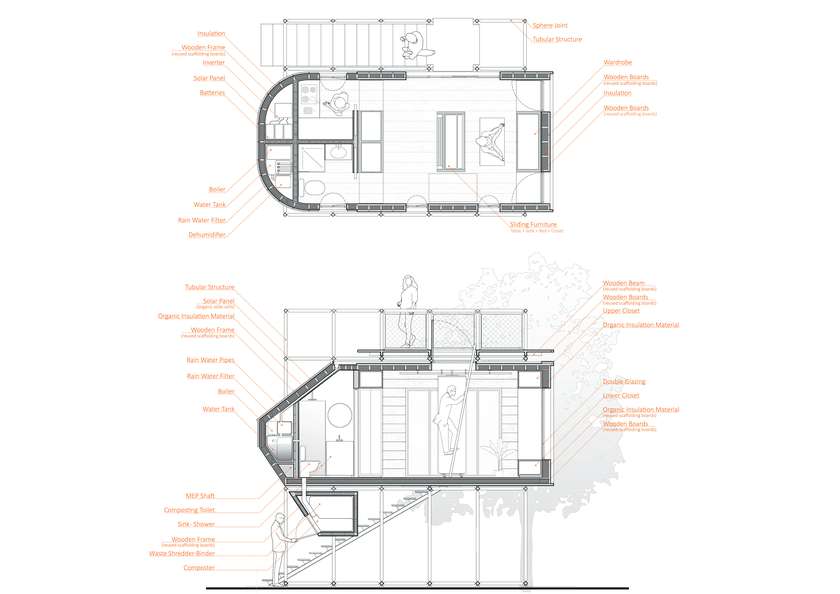
The Hermit Crab Module is designed to accommodate two people in 25 sqm. The living module is inserted in a tubular structure that raises it from the ground. The shell contains the services (bathroom-kitchen) and the technological equipment. The body consists of a versatile space, which allows it to be modified, becoming both a living and sleeping area, thanks to the presence of a rototranslating furniture, which can be modified according to the individual needs.
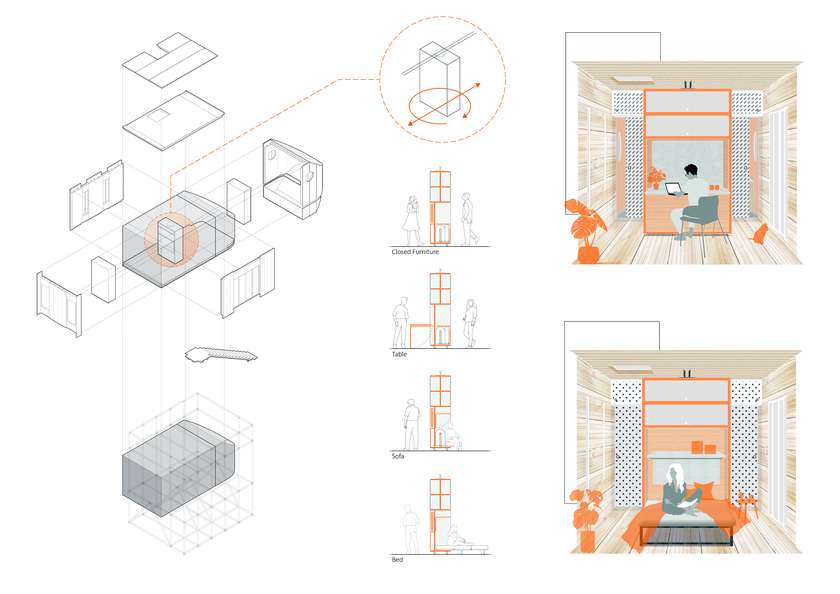
The module is made from reused and reusable materials. The main structure is composed of tubular steel elements. The walls and floors are "sandwich" elements, composed of a wooden frame, obtained by recovering scaffolding planks. Inside the module there is the RT Cabinet that can be moved and rotated. In this furniture there are both a folding table and a sofa bed, so that it is possible to configure the space freely.

The Hermit Crab Module is designed to have the lowest possible impact on the environment. Rainwater is collected in the roof, which is filtered and stored in the tank. The south-facing shell is covered with organic solar panels, which recharge the module's batteries. The waste produced, organic and inorganic, is sorted, shredded and stored or composted in the containers in the lower part of the shell, so that it can be easily collected from the outside.
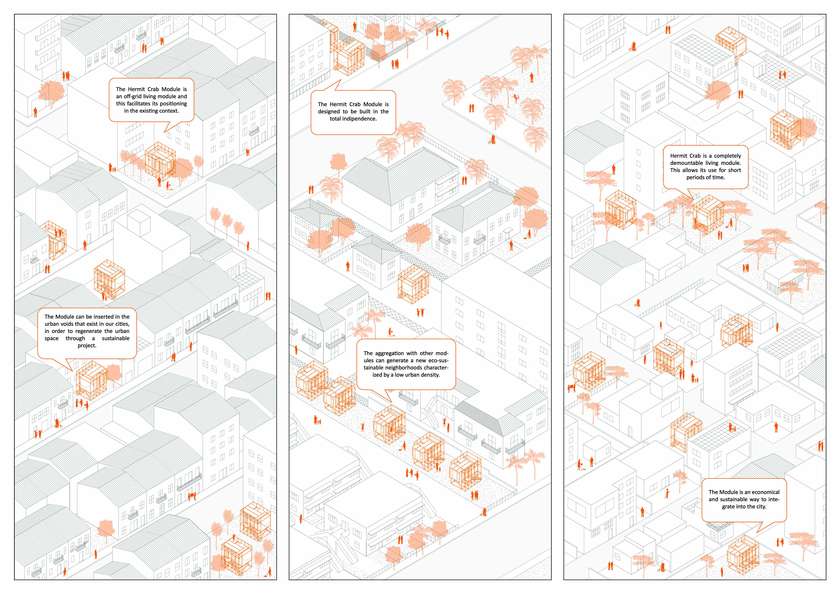
The Hermit Crab module is designed both to be inserted punctually in the various areas of the city, as well as to form a system of modules, in order to obtain communities marked by a new way of living, essential and sustainable. The module is a lightweight element that can be easily and quickly assembled or disassembled. It is itself a recyclable system, and not only the materials of which it is composed, so that it can be reused over time.